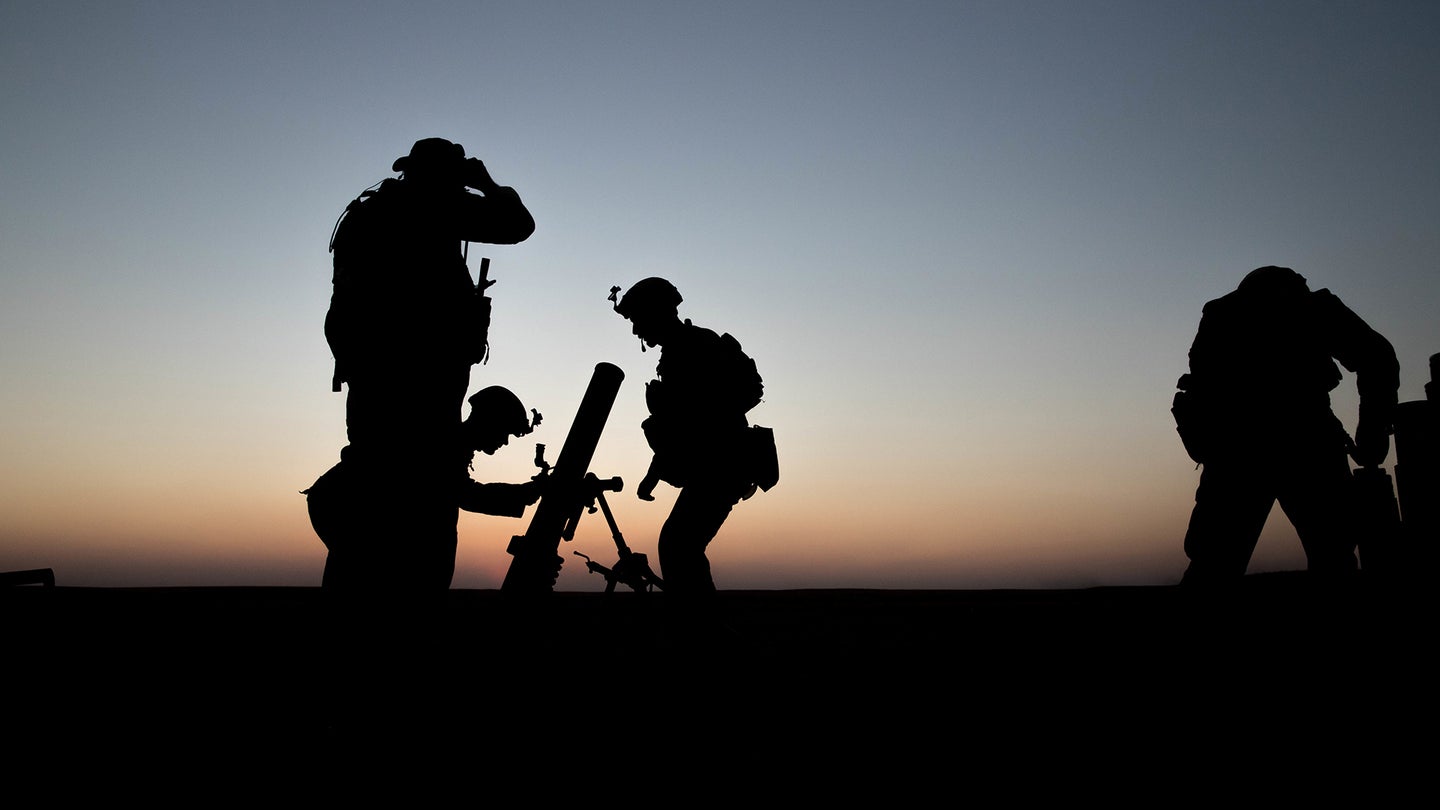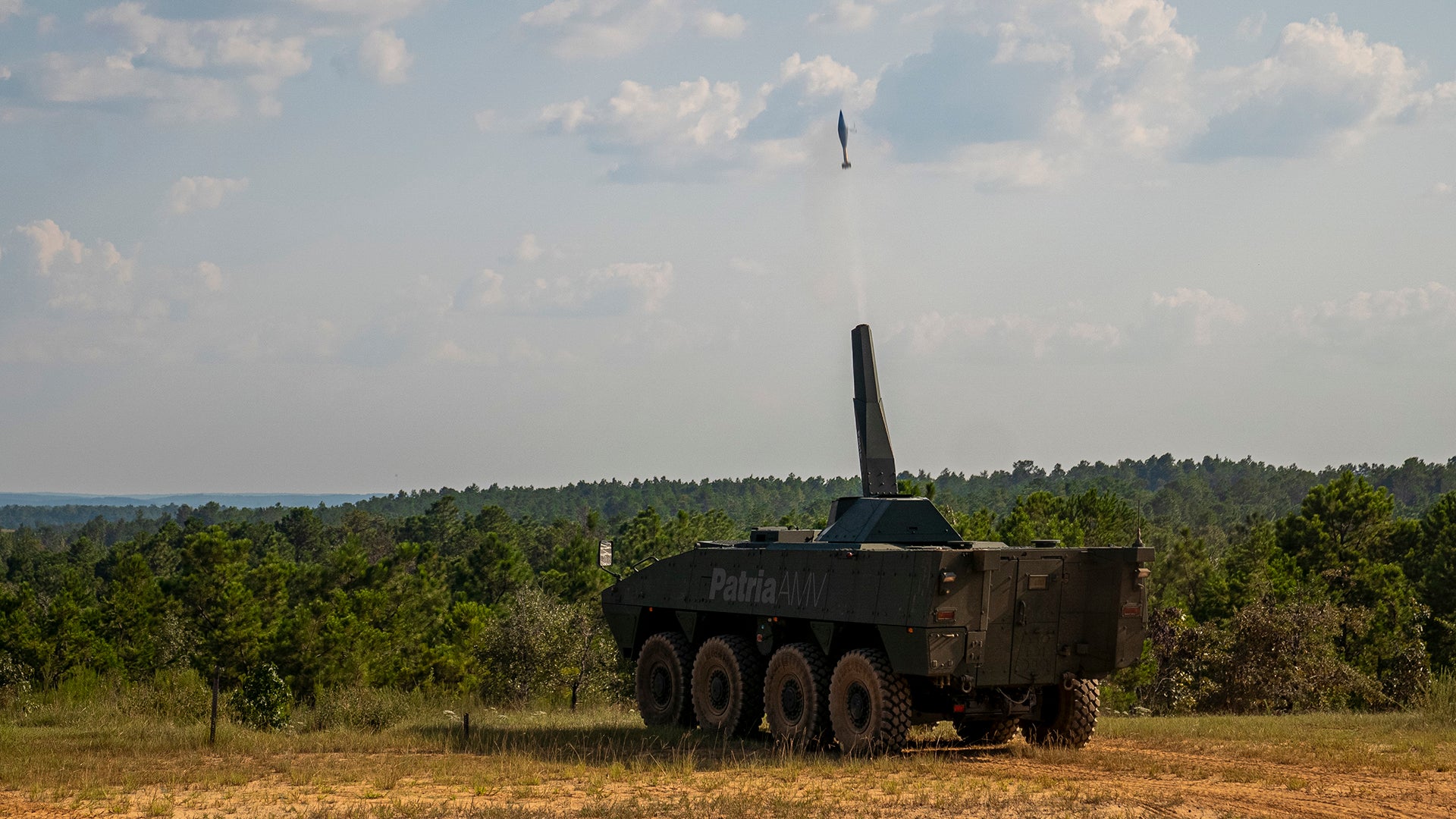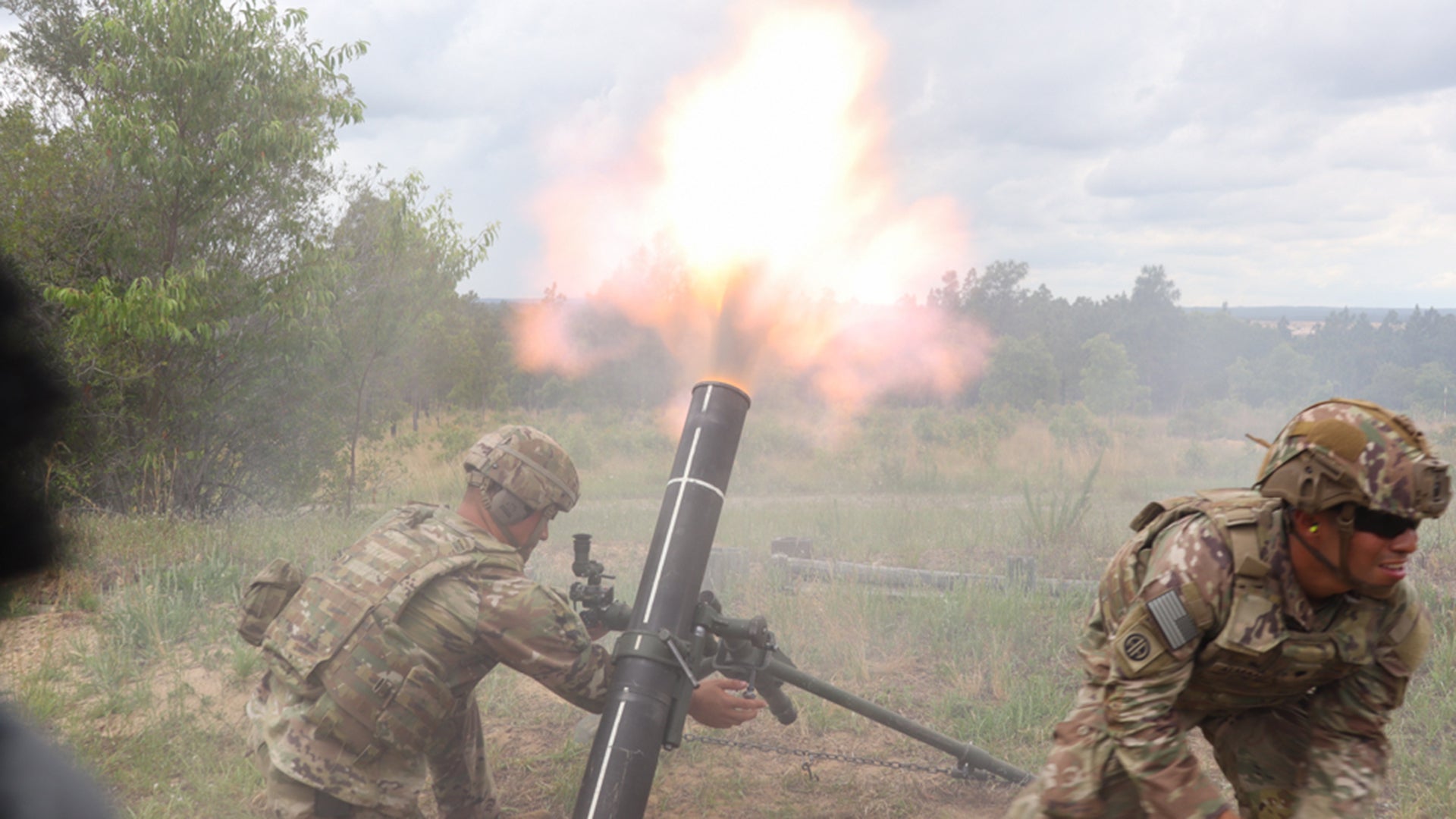JEFF SCHOGOL

The U.S. military would certainly need plenty of howitzers, multiple-launch rocket systems, and anti-ship missiles to fight China or Russia, but infantry units will increasingly need next-generation mobile mortar systems going forward to provide quick and reliable indirect fire during the next big war.
Mortars “are more important today than ever for the men and women in the close fight,” said retired Army. Maj. Gen. Patrick Donahoe. “As the ranges of our artillery systems increase and the battlefield becomes deeper, the tank infantry team in that last mile of combat and in the final hundred yards will be more dependent, not less, on mortars for their indirect fire support.”
Currently, the U.S. military operates the M1064, a self-propelled mortar system, but it consists of a mortar tube inside the open chassis of an M113 armored personnel carrier, leaving the crew vulnerable to enemy fire, said Donahoe, former commander of the Maneuver Center of Excellence at Fort Benning, Georgia. The mortar vehicle must also stop to allow the crew to fire.
Going forward, U.S. troops need self-propelled breech-loading mortars that can be accurately fired while on the move, Donahoe told Task & Purpose.
Russia’s invasion of Ukraine has shown that war will continue to be a slugfest between ground forces no matter how advanced military technology becomes. More than ever, infantry units will need mortar systems for close combat with enemy forces, said Donahoe.
“Large caliber mortars supporting the tank infantry team in the crucible of ground combat will often be the margin of victory or defeat in the evolving large-scale combat fight,” Donahoe said.
 Spectators gather to watch the Patria Nemo 120-mm mortar turret demonstration Sept. 11, 2019, at Red Cloud Range on post. (Patrick A. Albright/U.S. Army)
Spectators gather to watch the Patria Nemo 120-mm mortar turret demonstration Sept. 11, 2019, at Red Cloud Range on post. (Patrick A. Albright/U.S. Army)Toward that end, the Army is looking into the feasibility of installing a turreted mortar on Stryker armored personnel carriers, according to an Army news release from February 2021. The new mortar, or NEMO, is made by Patria Land Oy, a Finnish company. NEMO is a breech-loaded 120mm smoothbore mortar that can provide both direct and indirect fire.
Because NEMO is loaded from the breech, U.S. service members would be able to fire the weapon from inside a vehicle, where they would be protected, the Army news release says. Breech-loaded mortars can also fire at lower elevations than muzzle-loaded mortar tubes, which must be pointed nearly straight up so that rounds have enough kinetic energy to go off when they strike the firing pin.
Patria Land Oy has produced a 120mm Mortar Future Indirect Fire Turret for the Army, a company spokesman told Task & Purpose. Under its agreement with the Army, the company is also expected to produce a 120mm Extended Range Mortar system by 2026, the Army news release says.
For dismounted troops, mortars serve as portable artillery systems that are essential for close combat, allowing infantry units to provide indirect fire without having to call in air or artillery strikes, said retired Marine Col. Mark Cancian, a senior adviser at the Center for Strategic and International Studies think tank in Washington, D.C.
“The infantry really like mortars because they don’t have to coordinate with anyone else; they don’t have to call an air control center; they don’t have to call the artillery fire direction center; they can just fire the missions themselves,” Cancian told Task & Purpose. “When things are moving quickly and communications are breaking down, that is very valuable.”
Because mortars don’t have a recoil system, they are lighter than howitzers and thus easier to transport than other forms of artillery, he said.
“This makes them suitable for infantry units,” Cancian said. “Although shorter ranged than howitzers, they can cover the area directly in front of an infantry unit.”

A soldier fires a 120mm mortar on Fort Bragg, North Carolina, June 2, 2021. (Spc. Jacob Ward/U.S. Army)
As the Defense Department looks to a future in which U.S. troops may have to fight in “megacities” that have millions of inhabitants, mortar systems will become more important for street-to-street fighting.
Indeed, the second battle of Fallujah in November and December 2004 demonstrated just how effective mortars can be in urban combat, said retired Army Col. Gian Gentile, a senior historian with the RAND Corporation.
“Each of the two Army mechanized battalions that fought with the two respective Marine infantry regiments in the assault had a platoon of tracked 120mm mortars,” Gentile told Task & Purpose. “They were in high demand, especially by Marine infantry, because of their high angle fire which provided more accuracy in an urban environment, and, because of the size of each round being 120mm they had a lot of explosive effects on enemy positions inside of buildings.”
U.S. military experiments since then have focused on extending the range and accuracy of mortar systems, said Sunil Nair, an analyst with Janes, an open-source defense intelligence provider.
To wit, the U.S.-led Combined Special Ops Joint Task Force-Levant On Feb. 20 tweeted pictures of coalition troops in Syria firing illumination rounds from a XM905 Advanced Mortar Protection System, which has been in service since 2011.
The XM905 features a muzzle-loaded 120mm mortar mounted on an electrically operated turntable that can traverse 360 degrees, Nair told Task & Purpose. The system also includes technology to soften the weapon’s recoil, improving its accuracy.
Not all U.S. military experiments with advanced mortar systems have panned out, though. In 2018, the soldiers tested the Automated Direct Indirect-fire Mortar, which consisted of an 81mm mortar mounted on a powered base that could traverse 360 degrees, all of which was placed in the back of an M1152A1 Humvee.
But so far, the ADIM has proven to be too costly to the field, in part due to its soft recoil system, which slides the barrel forward before firing to help counteract the recoil, as our colleagues at The War Zone reported in 2018.
Regardless of whether U.S. troops face Russian or Chinese forces in future wars, infantry soldiers and Marines will need mortar systems that allow them to fire accurately and quickly change position. Ground combat will always be intimate and ugly, and the need for quick and reliable firepower will only grow in the future.
No comments:
Post a Comment